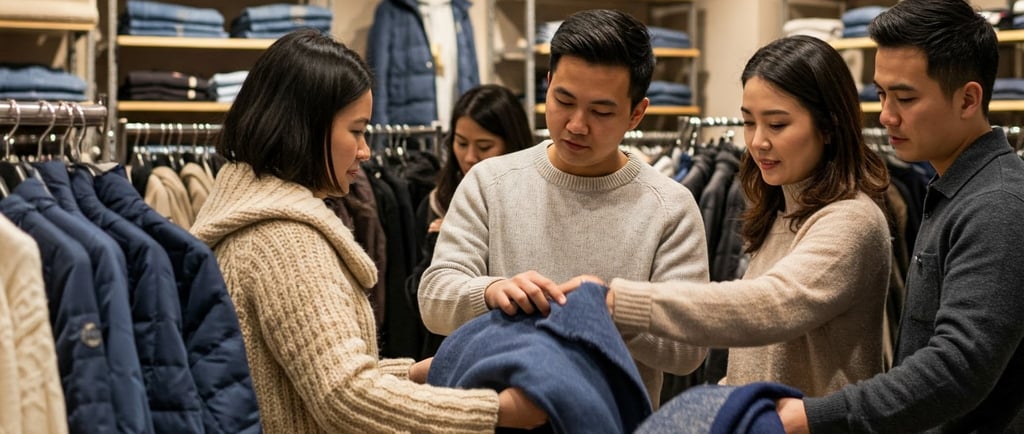How do Southeast Asians choose the proper clothes when traveling to other countries during the winter season?
When Southeast Asians travel to countries experiencing winter, adapting to colder climates requires thoughtful selection of clothing. This involves understanding layering techniques, choosing appropriate materials, and incorporating essential accessories to ensure warmth and comfort.
1. Embracing Layered Clothing:
Layering is fundamental to managing varying temperatures and activity levels in cold environments. A typical layering system includes:
Base Layer: Thermal underwear, such as long-sleeved shirts and leggings, serve as the first line of defense by retaining body heat and wicking moisture away from the skin.
Middle Layer: Insulating garments like fleece jackets or sweaters provide additional warmth.
Outer Layer: A waterproof and windproof jacket acts as a shield against external elements.
This method allows for adjustments based on activity and temperature fluctuations.
2. Selecting Appropriate Fabrics:
Choosing the right materials enhances comfort and thermal regulation:
Avoid Heavy Fabrics: Steer clear of dense materials like denim, which can be cumbersome and slow to dry.
Opt for Lightweight, Breathable Fabrics: Materials such as cotton t-shirts, linen shorts, and floaty skirts are preferable. They are comfortable and suitable for layering.
3. Incorporating Essential Accessories:
Accessories play a vital role in providing additional warmth and protection:
Hats and Gloves: Thermal hats and insulated gloves prevent heat loss from the head and hands.
Scarves and Neck Gaiters: These protect the neck and face from cold winds.
Thermal Socks: Wool or synthetic socks keep feet warm and dry.
4. Preparing for Specific Destinations:
Different regions experience varying winter conditions:
Mild Winters: In areas with moderate cold, such as parts of East Asia, a fleece jacket over a base layer may suffice.
Severe Winters: For destinations with harsh winters, such as Northern Europe or North America, more robust insulation and outerwear are necessary.
5. Understanding Cultural and Practical Considerations:
Adapting to local customs and practicalities enhances the travel experience:
Modesty and Cultural Sensitivity: In many Southeast Asian cultures, modest dressing is customary. When traveling to colder regions, maintaining modesty while staying warm can be achieved through layered clothing that covers the body appropriately.
Purchasing Local Clothing: In colder destinations, consider buying local winter wear. This supports local economies and provides clothing suited to the local climate.
6. Planning and Packing Tips:
Effective preparation ensures readiness for varying conditions:
Research Destination Climates: Understand the typical weather patterns of your destination to pack accordingly.
Pack Versatile Items: Choose clothing that can be mixed and matched and adapted for different settings and activities.
Test Your Gear: Before departure, wear your planned outfits to ensure comfort and suitability for the expected conditions.
By thoughtfully selecting and layering clothing, incorporating essential accessories, and considering cultural and practical aspects, Southeast Asian travelers can navigate winter climates effectively while maintaining comfort and respect for local customs.


